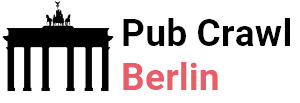A split city
The construction of the Berlin Wall started on August 13, 1961 and broke the history of the Germany’s one city. The Germany Democratic Republic divided the east and west region physically by the construction of the wall 28 years ago. It is impossible to emphasize the impact it had for the city and its inhabitants.
Originally just as a simple barbed wire barrier, its development was a rather quick transition to concrete walls, towers, and strictly protected gates. To summarise the wall was erected to curb east German citizens from moving into West Berlin which was economically developed as opposed to East Germany.
The Building Starts
The construction of the Berlin wall was done in a rather hasty and exhaustive manner. The specific building of the wall was probably within a few weeks, but the political conditions and the sentiments that led to construction had been brewing for years.
After the defeat of Nazi Germany, the nation was divided into four occupation zones run under the control of World War II Allies which include; the United States, Soviet Union, United Kingdom and France. However, almost surrounded by the Soviet forces, Berlin too was divided into four occupation zones.
When Soviet Union was in power, the eastern part of Germany was more unstable primarily due to the emergence of the Cold War and animosity between USSR and the west. This lead several East Germans to travel to the West in search of better living conditions, thus weakening the authority of the GDR and causing financial problems for it.
As the use of legal means for stopping the emigration failed the GDR built a Wall to prevent the people from leaving. That is why the construction started with closed-off roads and the workers agreed not to speak about construction progress. One Berlin’s fate was decided in a few hours; families were separated, the streets were divided.
A Puzzle of Days and Weeks
Thus, the construction of barbed-wire barriers started in the early morning August, 13, 1961 and caused a stir. It was a by no means a temporary divide; in fact it was apparent that this could not be a fleeting disruption soon enough.
In the course of the following days and weeks, real dumpers replaced the barbed wire fences while slowly pushing into the barbed wire barriers. Standing about twice as tall as a man, the wall followed the circumference of over ninety-six miles long the city.
This perhaps came as a shock to people as wall building was not always simple as it will be described here. As some areas expanded they became intricate and quite challenging to entry, over time. The last form of the wall was equipped with trenches, watch towers, as well as a ‘death strip’, which was a sand- or gravel-covered area that let the guards observe attempts at fleeing.
It is as an architectural creation inspired by the philosophy of the gospel.
The wall as an element was just an analogue of the profound ideological barriers dividing East from the West. While it took several days and weeks to build, the ideas and purposes that were set for its construction were much more challenging.
Used for the first time by the Western leader Winston Churchill to give name to the line dividing the communist East from the capitalist West, it depicted an outline of a more general confrontation between the Western states and the Soviet Union and her allies.
Specifically, the construction of the wall was aimed at maintaining communism, controlling the population from fleeing to the west and mainly limiting the penetration of the western influence. It was the symbol of dictatorship and a wake up call of the sufferings of the people of East Germany.
The fall from the wall
Again, the Berlin Wall which physically divided eastern and western Berlin was in place for 28 years. Nevertheless, as change in Eastern Europe moved apace toward the end of the 1980s, there was some doubt about that.
The incident took place in November 1989 when people of East Berlin went out on the street to call for more freedom of movement and politics. In response to much criticism, the East German government announced that underlining the travel restrictions would be planned to be done away with. On November 9, 1989, which can be considered turning point, the guards unlocked the crossing points and people can cross the wall without restrictions.
Symbolizing unity of East and west and the downfall of the cold war this event was one of the historical significance. The structure which was constructed within the thread-worn days and weeks was knocked down in several months, thus eradicating the way for a new phase of liberty and synthesis.
Final Thought
Their construction was caused by political turbulence and difference in ideologies and this subdivided Germany and Berlin for almost three decades. Initially, it becomes a relatively temporary barrier and as time progressed, it turned into an extravagant wall system along with other securities which consisted of friends and families and changed the appearance of the city and its people permanently.
While symbolizing despair and division in Berlin, the actual bringing down of the wall in the year 1989 brought hope and therefore signified a positive change. The Berlin Wall’s construction and later demolition serve as a poignant reminder of the power of human determination and the relentless search of freedom.
Table of Contents

